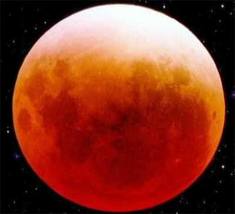 |
| Pralines in Brussel |
Herschey's existence and persistence proves one point: humans like other animals imprint the tastes and smells of home and these stay with us for the rest of our lives. No matter how unappealing, foul or tasteless these markers of home are, they will always occupy a special place in our minds for as long as we live. But back to business.
Much like the beer revolt that targeted Budweiser -now a Belgian brand- and Coors, a chocolate revolt appeared and some American micro-chocolate makers have acquired a reputation for perfection and a dedicated following. One such brand is the local Scharffen Berger, a brand that calls itself America's Finest Dark Chocolate.
 |
| Ghirardelli square, too sweet for me |
Scharffen Berger is much better than the overly sweet older local, San Francisco's Ghirardelli. That brand is housed in the famous Ghirardelli square, a San Francisco landmark that is worth visiting. The chocolate however is no longer taken very seriously by the local cognoscenti, although Ghirardelli has tried to reinvent itself and catch on to the dark wave.
The dark wave has transformed chocolate from an unhealthy candy snack for the masses to a sophisticated delicacy for the up and coming. Dark has risen to prominence and in the minds of some at least become a health food or even a supplement. Now here is one supplement I can wholeheartedly endorse.
That is not to say that Belgians were or are dark chocolate lovers. Far from it. The most popular chocolate in Belgium is milk and the most popular brands such as Cote d'Or and Jacques- Callebaut sell a lot of milk chocolate bars. Belgians also eat a lot of Swiss milk chocolate and Milka is a favorite. The brand is actually owned by Kraft foods.
 |
| Milk-hazelnut, the Belgian staple |
One thing I can say about the lowly Belgian bar is that, unlike American bars, it tastes like chocolate and is not overly sweet. I also think the addition of hazelnuts, a weird idea in the American mind, where the peanut dominates, adds to the flavor in unexpected ways.
 |
| Godiva?? |
What surprises many Belgians (and Americans for that matter) is that for the longest time, Belgium's premium praline maker Godiva was owned by Campbell Soup, a brand most Belgians only know about through the work of Andy Warhol.
Belgian chocolate comes in two main varieties: the chocolate bar, usually milk with hazelnuts, that is a children's favorite, and the praline or chocolate confectionary that helped launch Belgium into the chocolate stratosphere. There is a third -largely unknown variety- that has a much to do with recognition as the other two, and that is the raw or bulk chocolate used by cooks, dessert makers, and confectioners. These people buy the raw material they use in the their creations and their selection determines who wins the crown. And it is in the third category that Belgium has acquired a reputation for exceptional excellence.
Here Callebaut and others compete with world leader, Valrhona from France. The latter also makes a mean chocolate bar and is -by the way- one of my all time favorites for chocolate bars. How is that for an endorsement?
You've probably already guessed that I prefer dark chocolate. My favorite Belgian brand is Cachet made by Kim's chocolates in the city of Tienen (once known as the sugar capital of Belgium). Cachet makes a variety of bars that are all of excellent quality.
When it comes to pralines, I bypass the big 3, Godiva, Neuhaus (better) and Daskalides that dominate the Brussels airport, in favor of The Chocolate Line, surely some of the most innovative creations ever seen. The chocolates are made in West Vlaanderen, and sold in stores in Brugge and Antwerpen. The Chocolate Line is -to quote the famous Michelin guide- worth the detour.
I will also recommend any local bakery or chocolate shop that makes their own chocolate creations. These are often on par or better than the big 3.
Happy New Year everyone!














































